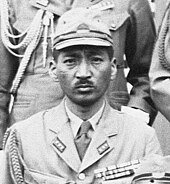
Isoroku Yamamoto's sleeping giant quotation is a film quote attributed to Japanese Admiral Isoroku Yamamoto regarding the 1941 attack on Pearl Harbor by forces of Imperial Japan.

Tora! Tora! Tora! is a 1970 Japanese-American epic war film that dramatizes the events leading up to the Japanese attack on Pearl Harbor in 1941, from both American and Japanese positions. The film was produced by Elmo Williams and directed by Richard Fleischer, Toshio Masuda and Kinji Fukasaku, and stars an ensemble cast including Martin Balsam, Joseph Cotten, So Yamamura, E.G. Marshall, James Whitmore, Tatsuya Mihashi, Takahiro Tamura, Wesley Addy, and Jason Robards. It was Masuda and Fukasaku's first English-language film, and first international co-production. The tora of the title, although literally meaning "tiger", is actually an abbreviation of a two-syllable codeword, used to indicate that complete surprise had been achieved.
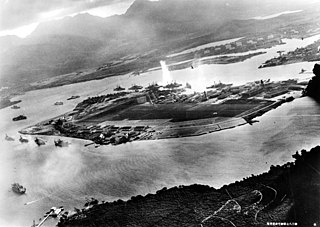
The attack on Pearl Harbor was a surprise military strike by the Imperial Japanese Navy Air Service on the American naval base at Pearl Harbor in Honolulu, Hawaii, the United States, just before 8:00 a.m. on Sunday, December 7, 1941. At the time, the United States was a neutral country in World War II. The attack on Hawaii and other U.S. territories led the United States to formally enter World War II on the side of the Allies the day following the attack, on December 8, 1941. The Japanese military leadership referred to the attack as the Hawaii Operation and Operation AI, and as Operation Z during its planning.
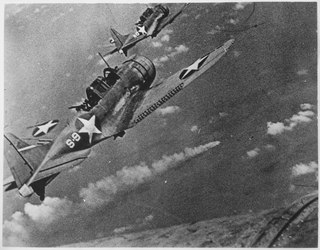
The Battle of Midway was a major naval battle in the Pacific Theater of World War II that took place 4–7 June 1942, six months after Japan's attack on Pearl Harbor and one month after the Battle of the Coral Sea. The U.S. Navy under Admirals Chester W. Nimitz, Frank J. Fletcher, and Raymond A. Spruance defeated an attacking fleet of the Imperial Japanese Navy under Admirals Isoroku Yamamoto, Chūichi Nagumo, and Nobutake Kondō north of Midway Atoll, inflicting devastating damage on the Japanese fleet. Military historian John Keegan called it "the most stunning and decisive blow in the history of naval warfare", while naval historian Craig Symonds called it "one of the most consequential naval engagements in world history, ranking alongside Salamis, Trafalgar, and Tsushima Strait, as both tactically decisive and strategically influential."

Kaga was an aircraft carrier built for the Imperial Japanese Navy (IJN). Originally intended to be one of two Tosa-class battleships, Kaga was converted under the terms of the Washington Naval Treaty to an aircraft carrier as the replacement for the battlecruiser Amagi, which had been irreparably damaged during the 1923 Great Kantō earthquake. Kaga was rebuilt in 1933–1935, increasing her top speed, improving her exhaust systems, and adapting her flight decks to accommodate more modern, heavier aircraft.

Sōryū was an aircraft carrier built for the Imperial Japanese Navy (IJN) during the mid-1930s. A sister ship, Hiryū, was intended to follow Sōryū, but Hiryū's design was heavily modified and she is often considered to be a separate class. Sōryū's aircraft were employed in operations during the Second Sino-Japanese War in the late 1930s and supported the Japanese invasion of French Indochina in mid-1940. During the first months of the Pacific War, she took part in the attack on Pearl Harbor, the Battle of Wake Island, and supported the conquest of the Dutch East Indies. In February 1942, her aircraft bombed Darwin, Australia, and she continued on to assist in the Dutch East Indies campaign. In April, Sōryū's aircraft helped sink two British heavy cruisers and several merchant ships during the Indian Ocean raid.
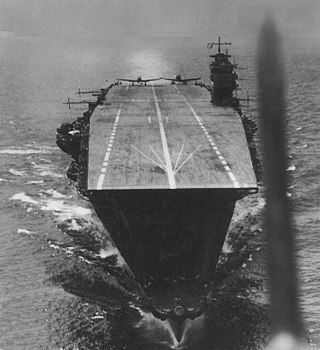
Akagi was an aircraft carrier built for the Imperial Japanese Navy (IJN). Though she was laid down as an Amagi-class battlecruiser, Akagi was converted to an aircraft carrier while still under construction to comply with the terms of the Washington Naval Treaty. The ship was rebuilt from 1935 to 1938 with her original three flight decks consolidated into a single enlarged flight deck and an island superstructure. The second Japanese aircraft carrier to enter service, and the first large or "fleet" carrier, Akagi and the related Kaga figured prominently in the development of the IJN's new carrier striking force doctrine that grouped carriers together, concentrating their air power. This doctrine enabled Japan to attain its strategic goals during the early stages of the Pacific War from December 1941 until mid-1942.
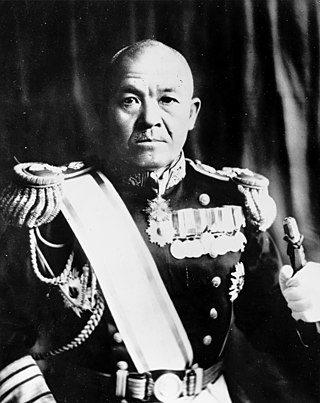
Chūichi Nagumo was an admiral in the Imperial Japanese Navy (IJN) during World War II. Nagumo led Japan's main carrier battle group, the Kido Butai, in the attack on Pearl Harbor, the Indian Ocean raid and the Battle of Midway. He never recovered from the crushing defeat at Midway, and committed suicide during the Battle of Saipan.
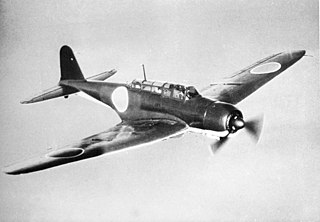
The Nakajima B5N was the standard carrier-based torpedo bomber of the Imperial Japanese Navy (IJN) for much of World War II. It also served as a high level bomber.

Gordon William Prange was the author of several World War II historical manuscripts which were published by his co-workers after his death in 1980. Prange was a professor of history at the University of Maryland from 1937 to 1980 with a break of nine years (1942–1951) of military service in the United States Navy during World War II, and in the postwar military occupation of Japan, when he was the Chief Historian on General Douglas MacArthur's staff. It was during this time that Prange collected material from and interviewed many Japanese military officers, enlisted men, and civilians, with the information later being used in the writing of his books. Several became New York Times bestsellers, including At Dawn We Slept, The Untold Story of Pearl Harbor and Miracle at Midway.

Midway, released in the United Kingdom as Battle of Midway, is a 1976 American war film that chronicles the Battle of Midway, a turning point in the Pacific Theater of Operations of World War II. Directed by Jack Smight and produced by Walter Mirisch from a screenplay by Donald S. Sanford, the film starred Charlton Heston and Henry Fonda, supported by a large international cast of guest stars including James Coburn, Glenn Ford, Ed Nelson, Hal Holbrook, Robert Webber, Toshiro Mifune, Robert Mitchum, Cliff Robertson, Robert Wagner, Pat Morita, Dabney Coleman, Erik Estrada and Tom Selleck.
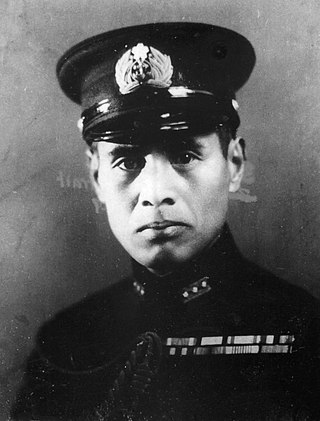
General Minoru Genda was a Imperial Japanese Navy flight officer, JASDF general and politician. He is best known for helping to plan the attack on Pearl Harbor. After the war he became the third Chief of Staff of the Japan Air Self-Defense Force.
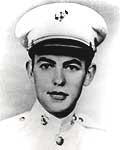
Captain Richard Eugene Fleming was a United States Marine who received the Medal of Honor for his heroism in World War II during the Battle of Midway. Fleming piloted a Vought SB2U Vindicator dive bomber in an attack on the Japanese cruiser Mikuma.

The 1st Air Fleet, also known as the Kidō Butai, was a combined carrier battle group comprising most of the aircraft carriers and carrier air groups of the Imperial Japanese Navy (IJN) during the first eight months of the Pacific War.
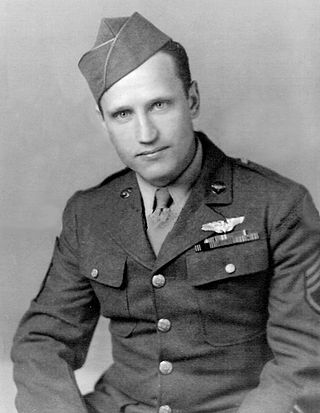
Jacob Daniel DeShazer participated in the Doolittle Raid as a staff sergeant and later became a Christian missionary in Japan.
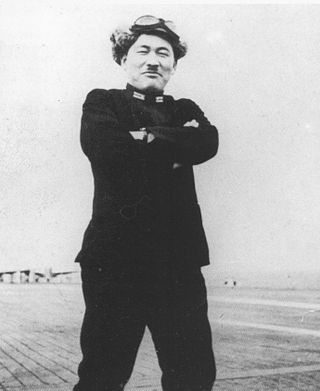
Shigekazu Shimazaki was a Japanese career officer in the Imperial Japanese Navy Air Service during World War II.
The Pacific War is a series of alternate history novels written by Newt Gingrich and William R. Forstchen with Albert S. Hanser. The series deals with the Pacific War between the United States of America and the Empire of Japan. The point of divergence is the decision of Admiral Isoroku Yamamoto, commander-in-chief of the Japanese Combined Fleet, to take personal command of the 1st Air Fleet for the attack on Pearl Harbor, rather than delegate it to Adm. Chūichi Nagumo.
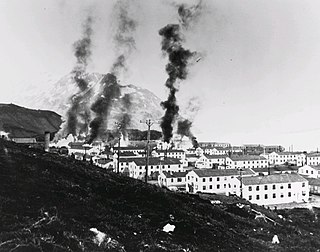
The Battle of Dutch Harbor took place on 3-4 June 1942, when the Imperial Japanese Navy launched two aircraft carrier raids on the Dutch Harbor Naval Operating Base and U.S. Army Fort Mears at Dutch Harbor on Amaknak Island, opening the Aleutian Islands campaign of World War II. The bombing marked the first aerial attack by an enemy on the continental United States and was the second time in history that the continental U.S. was bombed by someone working for a foreign power, the first being the accidental bombing of Naco, Arizona, in 1929.

The attack on Pearl Harbor has received substantial attention in popular culture in multiple media and cultural formats including film, architecture, memorial statues, non-fiction writing, historical writing, and historical fiction. Today, the USS Arizona Memorial on the island of Oahu honors the dead. Visitors to the memorial reach it via boats from the naval base at Pearl Harbor. The memorial was designed by Alfred Preis, and has a sagging center but strong and vigorous ends, expressing "initial defeat and ultimate victory". It commemorates all lives lost on December 7, 1941.

The Hikōtaichō (飛行隊長) was a senior naval aviation position in the Imperial Japanese Navy Air Service, normally held by a Lieutenant Commander or a very senior Lieutenant, who commanded all flight personnel in an air group.


